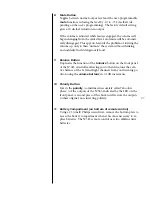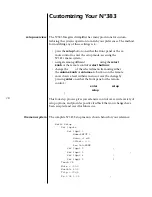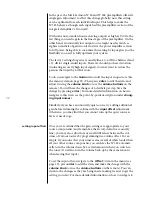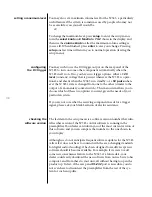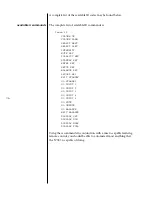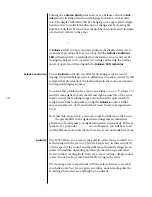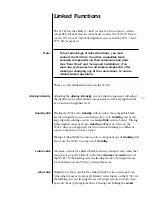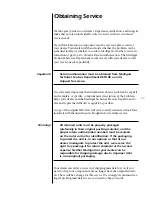
38
Turning the
volume knob
(which serves as a balance control in
bal-
ance
mode) in either direction will change the balance in that direc-
tion. The display will reflect this by changing to the appropriate single-
headed arrow to indicate the direction of change and by showing the
number of decibels by which that channel has been increased (in tenths
of a decibel) relative to the other.
(In point of fact, it is the opposite
channel’s volume that is reduced, a much safer and more sensible thing to
do that increasing the volume of the channel toward which you wish to
shift the image.
)
If
balance
is left in a non-centered position, the display will revert to
its normal operation after a few seconds, but the
balance indicator
LED
will remain lit as a reminder that the balance is not centered. Re-
storing the balance to its centered, 0.0 setting and leaving the balance
mode of operation will extinguish the
balance LED indicator
.
balance control tip
Precise
balance
control is essential for obtaining accurate sound-
staging. Output imbalances due to differences in speaker sensitivity and
asymmetrical placement of the loudspeakers in the room are common,
and degrade imaging accuracy.
To correct this problem, play a mono recording (or use a “Y-adapter” to
send the same signal to both the left and right connectors of the active
input). Center the resulting image (which should be quite small) di-
rectly between the loudspeakers, using the
balance
control. Differ-
ences as small as 0.1 or 0.2 decibels have been found to be significant.
Try it.
Note that this “mono trick” can correct only for differences that occur
after
the preamplifier in the signal chain, things like asymmetrical
placement of loudspeakers or slight mismatches in sensitivity between
speakers. If a particular
recording
is out of balance, you will have to ad-
just the balance more subjectively, in stereo, as you normally have done.
polarity
The Nº383 allows you to invert the polarity of the music to which you
are listening with the press of a button. People vary in their sensitivity
to this aspect of the sound, and the difference frequently ranges from
subtle to inaudible, depending on microphone technique and other
factors in the recording itself. However, some recordings simply sound
correct in one position, and irretrievably wrong in the other.
We encourage you to experiment with the polariy feature to see what
you think works best for any given recording, understanding that the
recordings themselves are anything but consistent.
Содержание N383
Страница 1: ...N 383 Integrated Amplifier Owner s Manual MADRIGAL AUDIO LABORATORIES R...
Страница 3: ......
Страница 15: ...15...




